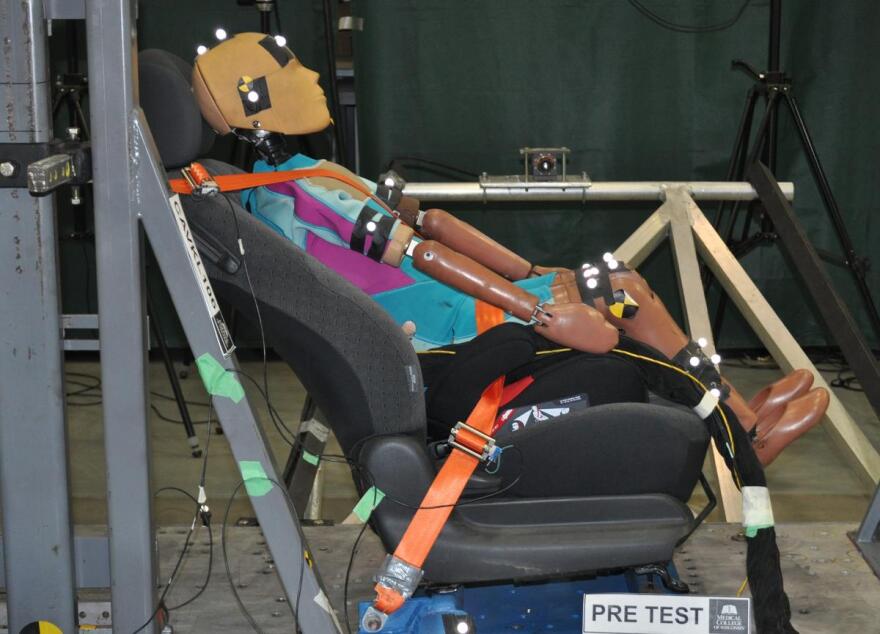With St. Patrick's Day approaching, police say they're worried about an uptick in drunk driving and highway crashes. This comes on top of last year's record number of traffic-related fatalities in Milwaukee County, and increases in traffic deaths in Wisconsin and across the U.S.
Efforts are underway by local law enforcement and car crash experts to reduce the death toll.
A task force of more than 40 law enforcement agencies in southeastern Wisconsin has begun one of its occasional missions to crack down on impaired driving. Police say using federally-funded overtime dollars, patrol assignments are underway to detect, stop and arrest drivers that are under the influence of alcohol or narcotics.
The week around St. Patrick's Day is, in law-enforcement-speak, one of the "high-intensity drinking events."
Task force spokesperson and Wauwatosa Police Lt. Bradley Beckman said that last year, there was a strong local aspect to the nationwide increase in traffic deaths.
"In Milwaukee County alone, over 100 people died in fatal crashes in 2020. We want to fix that. Whether it's reckless driving, or OWI-impaired driving, we need to bring that number down again. Over 100 people died on the roadways in Milwaukee County is too many," he said.

Beckman declined to say much about what he's seen when responding to traffic crash calls, as he said officers are focused on the job of providing aid. But he said fatal crashes involving children are the most difficult ones for police.
"It's a child. If a child is killed in a traffic crash, it's tough. It's tough for our guys, especially the ones that have children themselves, to see that,” he said.
Numbers from the Wisconsin Department of Transportation show for the first two months of this year, statewide traffic fatalities were about the same as for the first two months of last year.

But 2021 has also seen some high-profile injuries. In a February television report on Channel 58 in Milwaukee, a couple of the 911 calls described a pickup truck plunging 70 feet off a Zoo Interchange ramp.
"I was, I was on the highway going towards the off-ramp and a car just flipped off the off-ramp. It's like a big drop,” one caller said.
A second reported: “There was a car that literally drove off the highway up above and landed in the snowbank.”
Police issued citations against the driver, a Pewaukee man, including for going about 20 miles per hour over the ramp speed limit. The man also suffered a broken back and leg.
The chairperson of the joint Marquette University and Medical College of Wisconsin Biomedical Engineering Department, Frank Pintar, said safety requirements like seat belts and front and side airbags have cut the number injuries and deaths over the decades. But Professor Pintar said those devices don't help much when crashes occur at very high speeds.
"Safety regulations are meant for the more typical crash in the neighborhood of 30-50 miles per hour, and if you've got high speed crashes above 60, 70, 80 miles per hour, you know, even some of the best safety systems are not going to either save your life or prevent injury,” he said.
Pintar's research team has several grants with the National Highway Traffic Safety Administration (NHTSA). He said the most common fatal injuries in a vehicle crash are to the head and chest.
Pintar said one thing he's studying now is the development of automated vehicles where sensors and other devices assist with a lot of the driving for the person behind the wheel. He said the issue is what happens if the driver or more passengers relax and recline their seats.
"One of the concerns is certainly belt fit when you're reclining. If you've ever been in a vehicle and reclined your seat back, you know that generally the belt will come off the chest and sometimes your lap belt may ride up into your abdomen, and those are dangerous things when it comes to a crash, if you're positioned in that way,” said Pintar.

Pintar said safety experts are considering whether to recommend a four-point safety belt harness instead of a three-point one. He said vehicle designers are also looking at anchoring the belt to the seat only to better position the belt on the body.
He also mentioned additional improvements to airbags: "There's knee airbags, you know, the rollover bags that are now prominent, especially in SUVs."
Pintar said there's also policy talk of maybe increasing penalties for excessive speeding.

Last year's increase in traffic deaths and crashes came when fewer miles were being driven due to the COVID-19 pandemic. If the pandemic continues to ease due to more vaccinations, a question is: Will bad habits like speeding, impaired driving and distracted driving continue — even as more drivers are on the road?
Do you have a question about innovation in Wisconsin that you'd like WUWM's Chuck Quirmbach to explore? Submit it below
_





